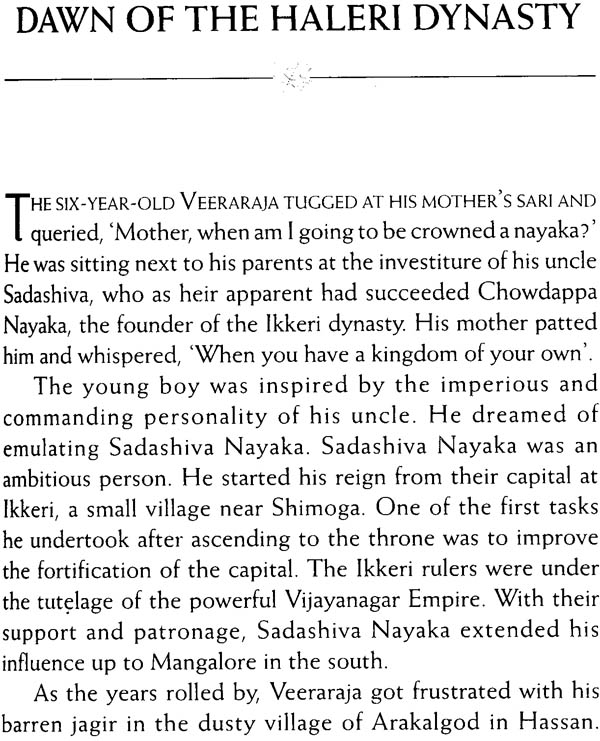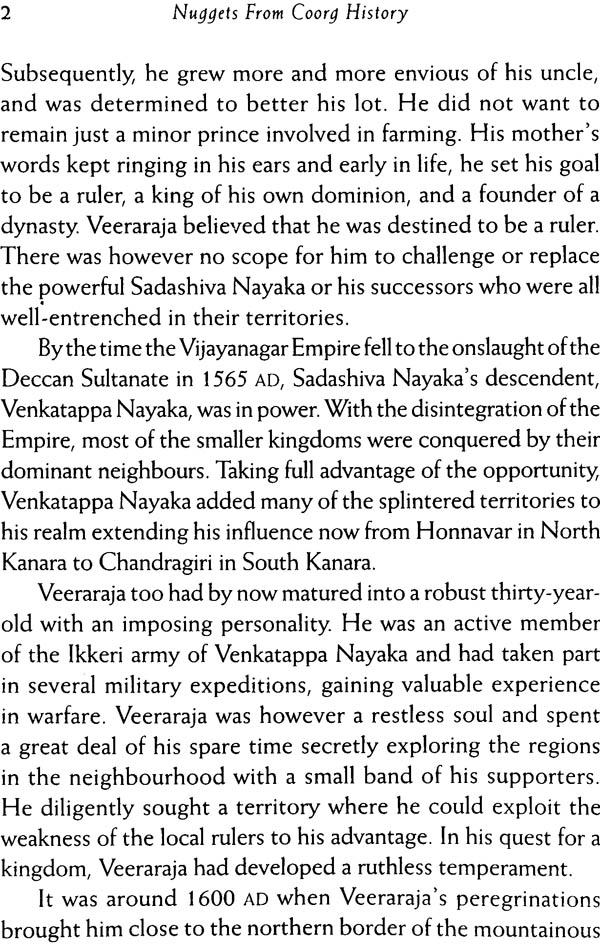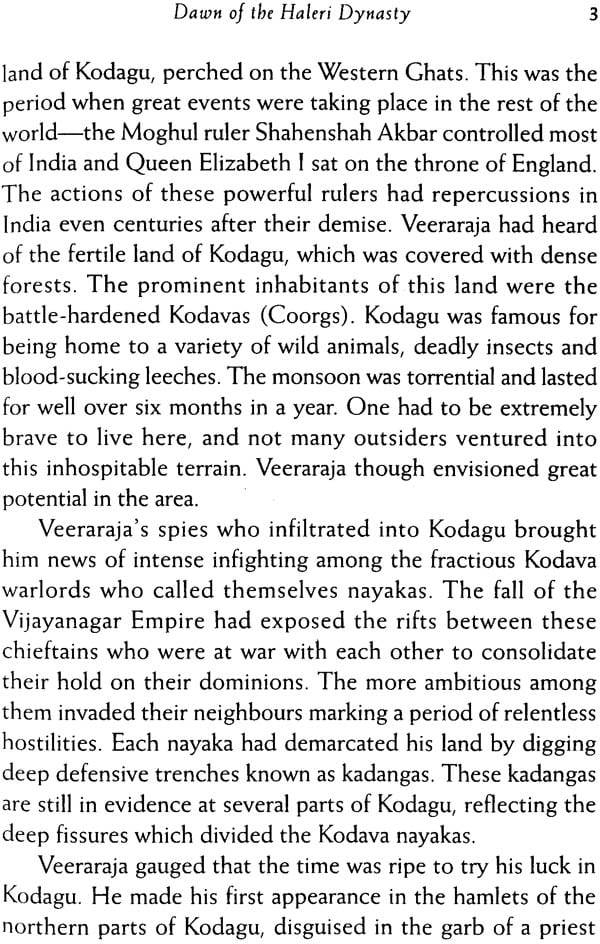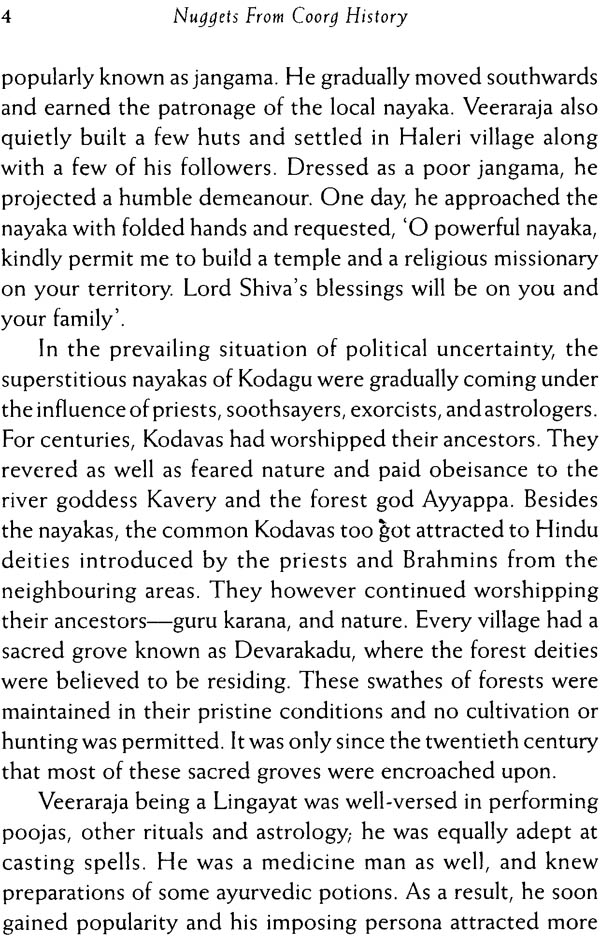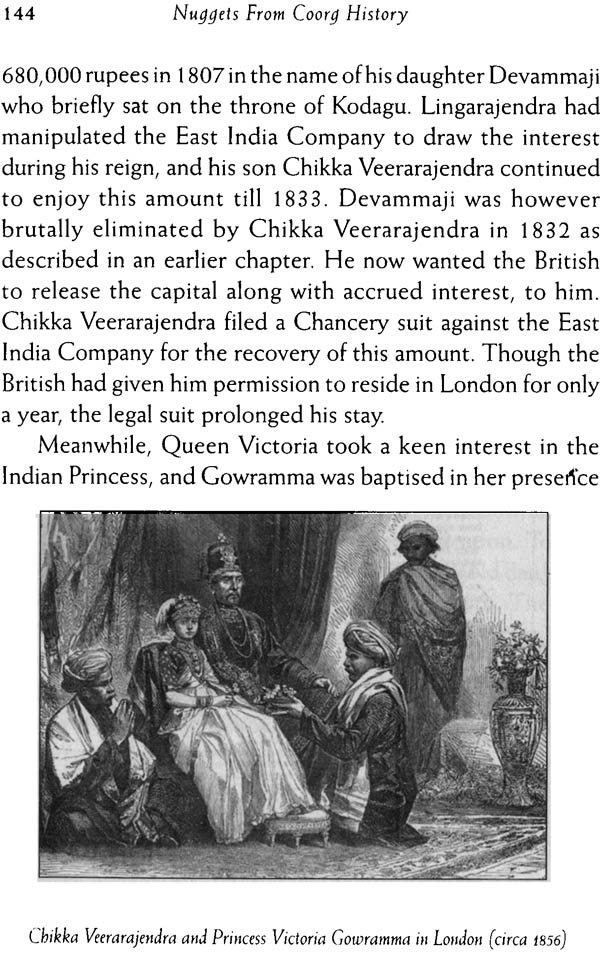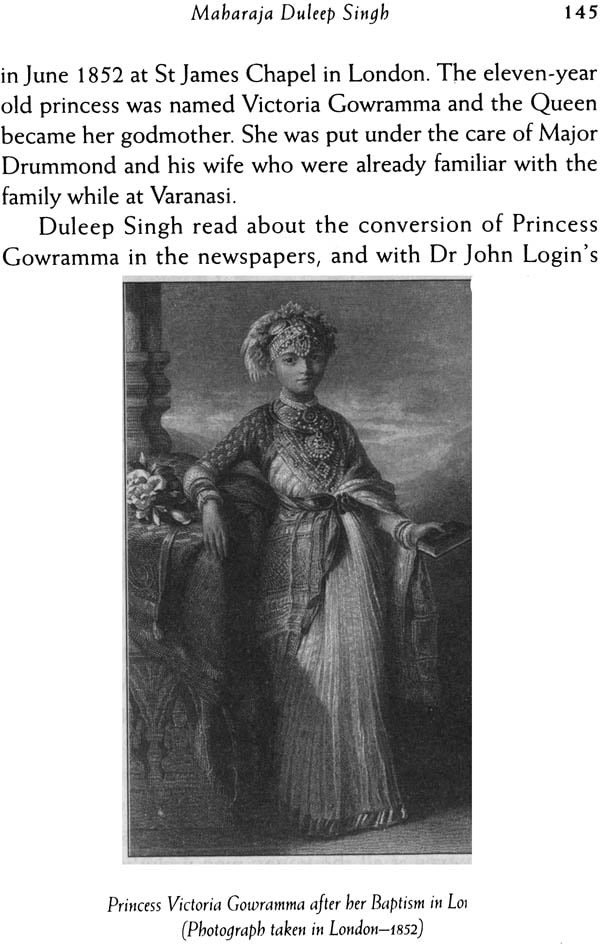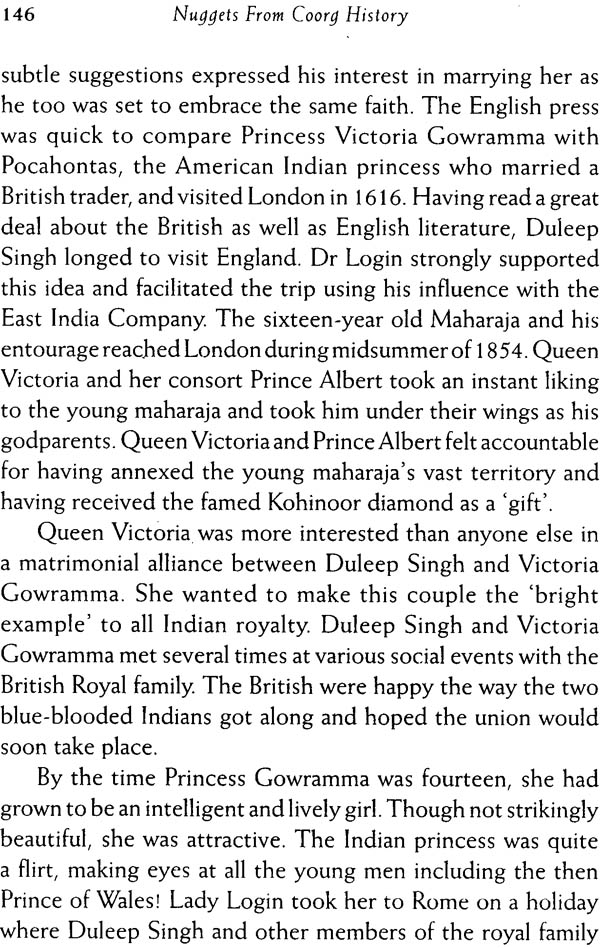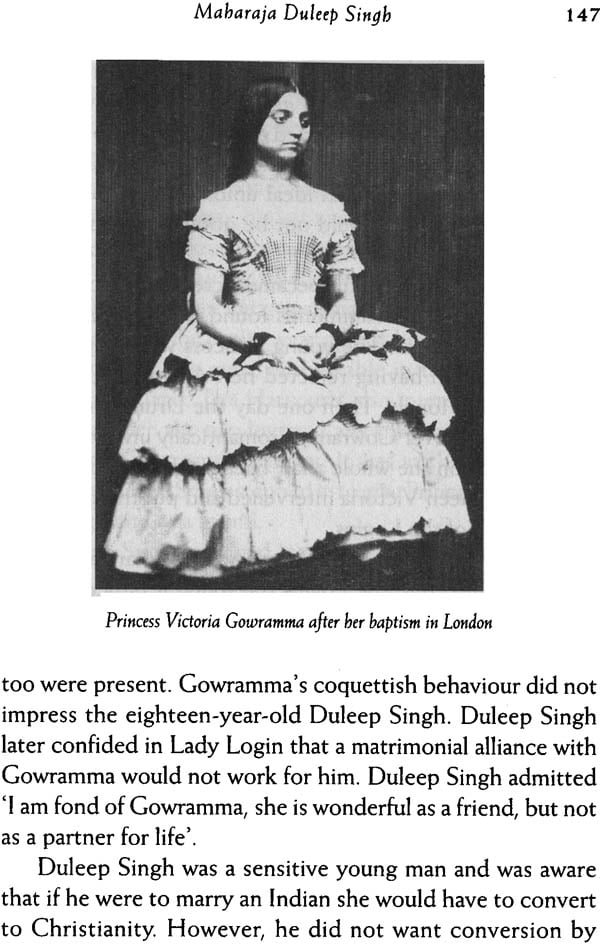
Nuggets From Coorg History
Book Specification
| Item Code: | NAG472 |
| Author: | C.P. Belliappa |
| Publisher: | Rupa Publication Pvt. Ltd. |
| Language: | English |
| Edition: | 2021 |
| ISBN: | 9788129113023 |
| Pages: | 176 (16 B/W Illustrations and 1 Map) |
| Cover: | Paperback |
| Other Details | 7.5 inch X 5 inch |
| Weight | 190 gm |
Book Description
About the Book
Nuggets from Coorg History encapsulates the history of Kodagu from 1600 to 1956 in twenty engaging stories. The prominent community of this landlocked provinc of coffee and cinnamon-the Kodavas, or the Coorgs though fiercely independent and of warrior class, never actually ruled their land. They were fractious which made them an easy target for foreign domination.Kodavas, now a progressive community, were unlettered until the British introduced education in 1834. Hence their is mainly an oral history passed down over generations. In influenced and shaped the destiny of Coorg.
About the Author
C.P. Belliappa halis from Coorg in Karnataka,kown for growing the finest coffee in the country. An engineer with a master's degree from the US, he is a regular contributor to newspapers, magazines and websites. He now lives and manages his coffee estate in Coorg.
Preface
Rev. Richter was one of the first Englishmen to compile a comprehensive history of this tiny province of Coorg in his Gazetteer of Coorg published in 1870. He drew a great deal of his material from the earlier writings on Coorg by Rev. Herman Moegling, the German Protestant evangelist particularly his Coorg Memoirs published in 1855. Early history of the Haleri dynasty was recorded in Rajendraname, which was commissioned by Veerarajendra (popularly known as Dodda Veerarajendra) in 1808. General Abercrombie, a contemporary and friend of Veerarajendra later translated Rajendraname into English.
The rajas of the Haleri dynasty who ruled Coorg from 1600 to 1834 were alien to Coorg and the local culture. Haleri rajas were Lingayats. The prominent community of Kodagu consisted of the Kodavas (Coorgs) who were ancestor and nature worshippers. However, a strong bond was forged between the Lingayat rajas and the Kodavas, which lasted for more than two centuries. It was part folly of the last raja and part intrigues of the British East India Company that finally brought an end to the dynasty.
Coorg first attracted the attention of the British in their quest to overthrow Tipu Sultan of Mysore. Tipu Sultan and his father Hyder Ali were both disliked by the Haleri rajas as well as the Kodavas. As a result, Kodagu became a willing ally of the British in fighting the Tiger of Mysore'. The geographic location of Coorg was of great strategic value due to which the help provided by Veerarajendra proved to be of vital importance in the defeat of Tipu Sultan in 1799.
The British who came to Coorg after its annexation in 1834 were clearly smitten by this land. The early settlers came primarily with a view to exploit the potential of growing coffee. Coorg was a thickly forested area full of wild animals. It was adventure coupled with the prospect of owning a plantation that attracted the British to venture into this inhospitable area. They got on well with the local population who too followed the British in opening coffee estates. The settlers found the weather and the landscape similar to that in some parts of Britain and nostalgically named Coorg as the 'Scotland of India'.
The only Indian who carried out extensive research into Coorg history was D.N. Krishnayya, who was a lecturer in the government college in Mercara. His book, written in Kannada titled Kodagina Ithihasa (History of Coorg) is .a treasure trove of interesting anecdotes and details collected from earlier accounts, and his interactions with some of the Kodava families during the 1930s. I have gathered a great deal of information on Coorg history from Krishnayya's book, which was first published in 1974. I pay my tribute to Krishnayya for recording some important facts, which would have been lost otherwise.
In this book, I have gleaned interesting episodes pertaining to Coorg history and have dramatised the stories to some extent in order to make them interesting to the reader. In this, I have followed the dictum of Aristotle who once famously said:
the dramatized representation of history is a more scientific and serious pursuit than the exact writing of history.
All the events and dates, however, are factual.
I have a personal connection with the history of Coorg. My great-great-great grandfather Dewan Chepudira Ponnappa served the last three rajas of Coorg. The East India Company retained him after the annexation of Coorg by the British in 1834. His sons and grandsons held important positions under the British rule. However, his great-great grandson CM. Poonacha (my father) was one of the leading figures from Coorg in the freedom movement, and was the Chief Minister of Coorg State from 1952 to 1956.
The history of Coorg could at best be a footnote in the hoary past of India. It is, however, the collective chronicle of what happened in every nook and corner of this complex land that makes the history of India fascinating. There is a common historic bond that encompasses India that is 'Bharat'.
Contents
| Acknowledgements | ix |
| Preface | xi |
| Dawn of the Haleri Dynasty | 1 |
| Acchu Nayaka of Anchigeri | 8 |
| Story of Alamanda Doddavva | 15 |
| Utha Nayaka | 22 |
| Siribai Dodda Veerappa Raja | 28 |
| Hyder Ali and Tipu Sultan in Coorg | 36 |
| A Kingdom Nearly Lost | 43 |
| Veerarajendra's Escapades & A Brief History of Virajpet | 52 |
| A Kingdom Regained | 59 |
| Last will and Testament of Veerarajendra | 67 |
| Lingarajendra the Lucky | 75 |
| Story of Thathanda Subbayya | 84 |
| The Omkareshwara Temple | 93 |
| Dewan Kunta Basava's Role in the Fall of Haleri Dynasty | 100 |
| Chikka Veerarajendra's Exile | 109 |
| Kongettira Rani Kaverammaji | 117 |
| The British in Coorg | 127 |
| Christianity in Coorg | 135 |
| Maharaja Duleep Singh & Princess Victoria Gowramma | 141 |
| Genesis of The Merger of Coorg with Karnataka | 151 |
| Glossary | 157 |
| References | 1 60 |
